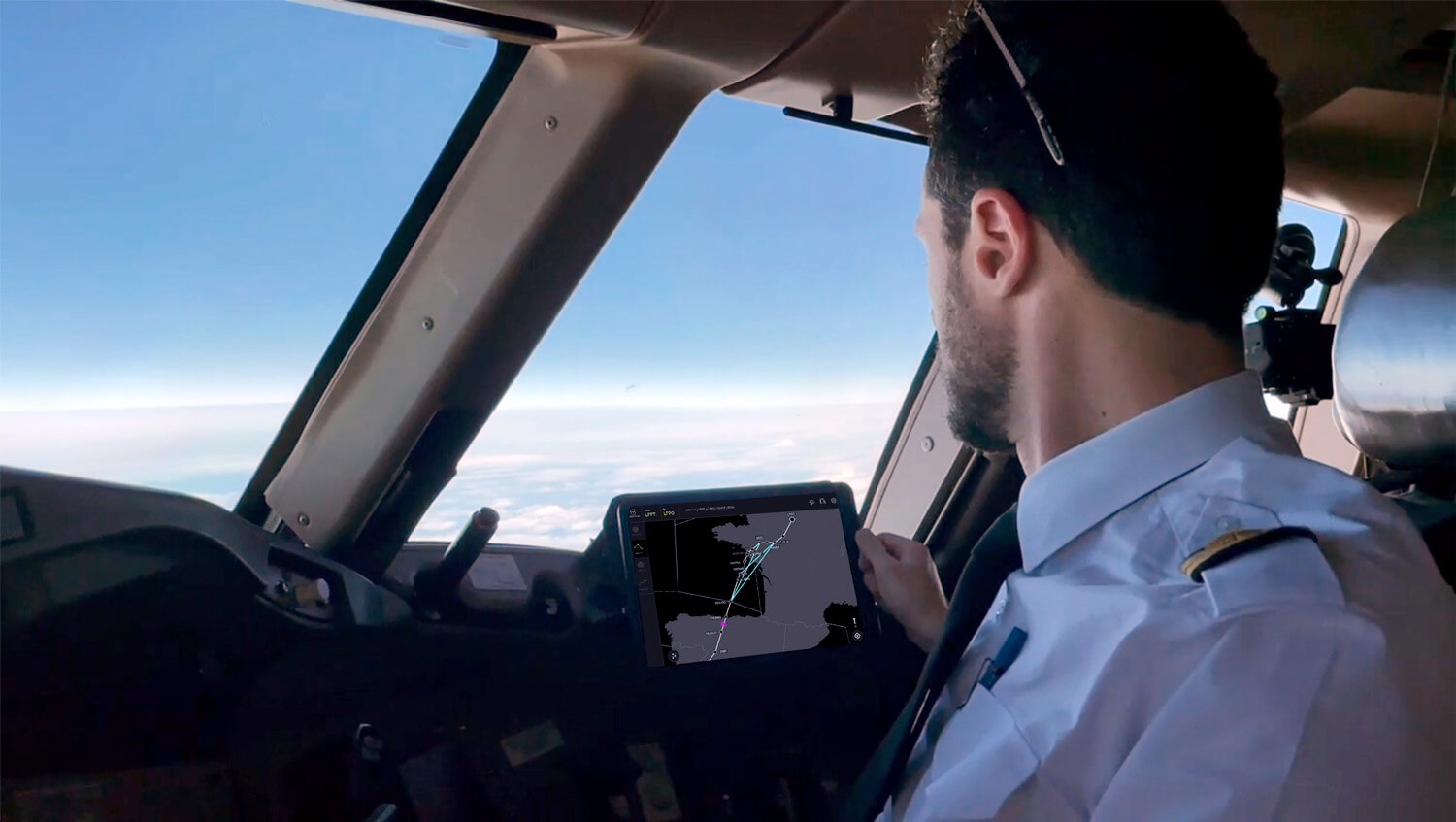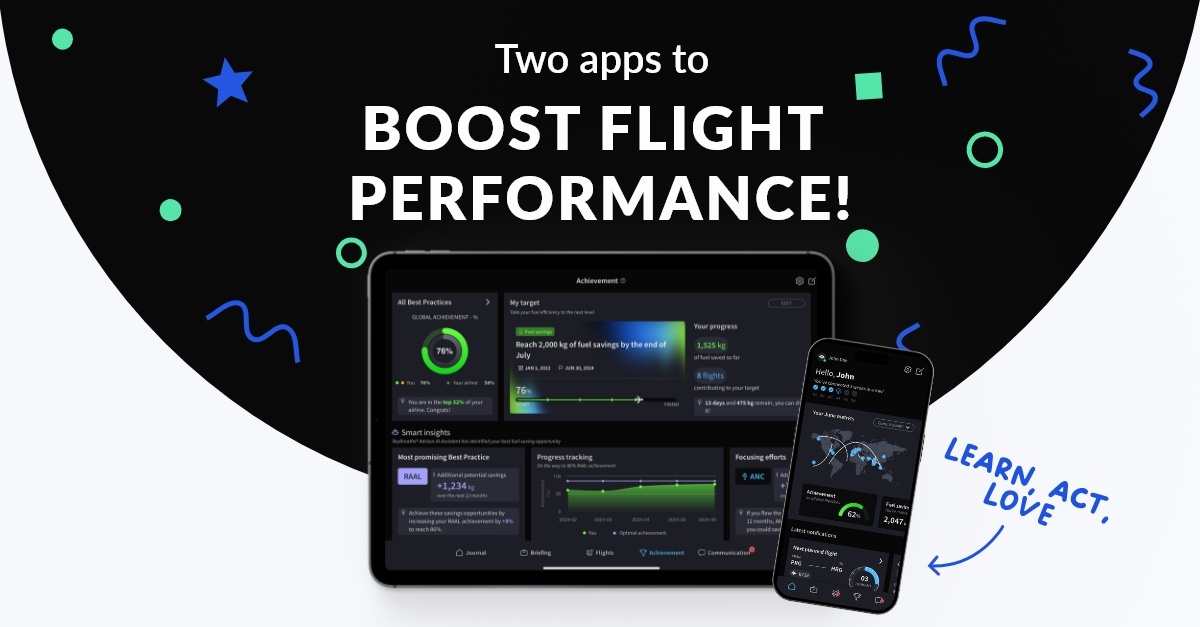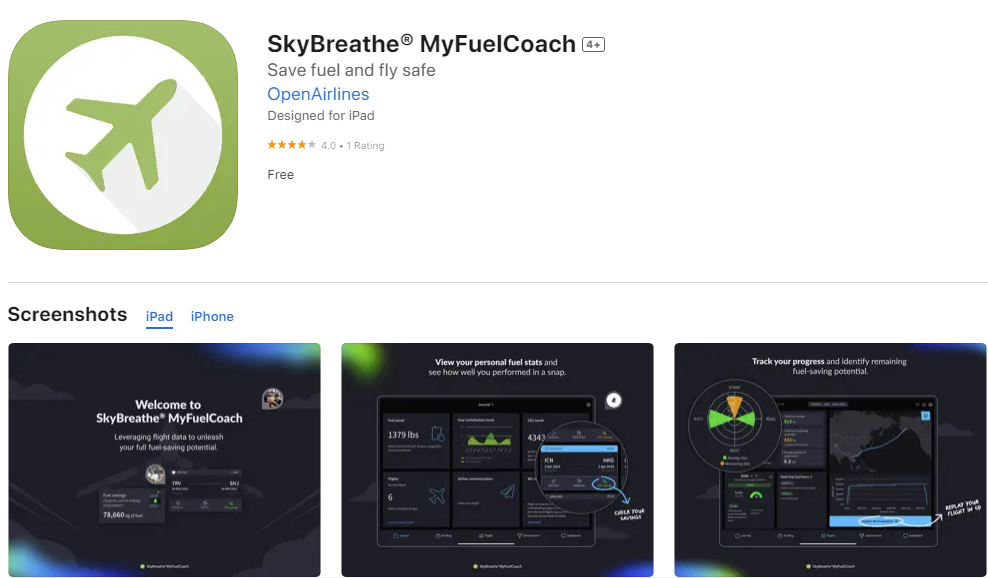Boost flight performance and engage pilots!
Updated on Nov 20, 2024
Is there a better way to reduce carbon emissions than by calling on the people who can make a real difference?
The aviation industry and governments have committed to the collective goal of Net-Zero carbon emissions by 2050, in line with the Paris Agreement. As airlines explore short-term levers to rapidly reduce air travel emissions, they should consider leveraging one of their strongest and most valuable resources, their pilots.
Pilots can act on each flight to reduce carbon emissions and collectively contribute to protecting the environment without compromising the safety of passengers or crew. Fuel optimization can seem to have little impact on carbon emission reduction at first glance, but cumulatively, it makes a big difference.
For example, the Idle Reverse Thrust is a best practice normally used to save fuel after landing as a means of braking. By going from 44% of application of Idle Reverse Thrust to a solid 93% application rate in just three years, the european low-cost airline Transavia managed to save 15,000 USD per aircraft and per year. It is a significant number considering that full reverse thrust only consumes ~15kg (33 lbs / 5 gal) per flight!
How can pilots have an impact on fuel emissions?
There are several fuel-efficient procedures that pilots can apply during the flight, whenever possible. For example, Idle Reverse Thrust mentioned above but also Engine out Taxi, Reduced Acceleration Altitude, Continuous Descent Approach, or Direct routes to name a few. These eco-piloting techniques concern all phases of a flight, from optimized trajectories and speed adjustments when the aircraft is in the air to taxiing with an engine shut down on the ground.
Related content >>> 22 ways to save fuel during a flight.
With the right tools, these procedures become easier to apply and maintain, even when pilots face various constraints
Flying more efficiently, a big challenge?
In a recent interview Hugo Possamaï, a 737 Captain at Transavia, highlighted a few challenges awaiting pilots willing to try their hand at eco-piloting.
“The first is the difficulty of staying engaged. Having the motivation to start is not difficult but keeping it over time is. SOPs [Standard Operating Procedures] can be complex because many conditions must be checked before applying a fuel-saving best practice.” said Captain Possamaï.
“The second issue is that it is hard to estimate success. Even if you apply all the best practices in the world, how would you know you’re doing well? How would you measure success and progress? And ultimately, how much fuel you saved?” he added.
In addition, pilots already have huge work and mental load to ensure flight safety and timeliness. They have little time to investigate fuel optimization opportunities and need more contextualized guidance during flight.
Luckily, advanced digital technology can easily overcome these obstacles today. New Artificial Intelligence (AI)-based tools are developed to help pilots improve fuel efficiency best practices application on each of their flights.
 Captain Hugo Possamaï investigating Direct routes during a flight.
Captain Hugo Possamaï investigating Direct routes during a flight.
A digital "fuel coach" at pilots’ fingertips
For almost a decade, the SkyBreathe® MyFuelCoach app, co-designed with pilots has woven itself into their ecosystem to help them plan and monitor their fuel-saving actions.
Available on iOS and Android, the app allows pilots to see their fuel performance for each flight, learn how they can improve with recommended best practices, track their progress, and access accurate information for pre-flight briefings. Additionally, pilots can compare their performance with their airline’s overall results to cross-fertilize their experience with other pilots and identify areas for improvement.
Latest Features & Improvements
We are currently releasing some exciting new features in the SkyBreathe® MyFuelCoach app to help pilots progress and reduce flight emissions.
The updates exist around 3 core pillars to help durably involve pilots in flight efficiency: Learn, Act & Love.
.png?width=456&height=345&name=ipad-mockup-mfc-blog%20(1).png) The new SkyBreathe® MyFuelCoach app*
The new SkyBreathe® MyFuelCoach app*
Learn: Teaching pilots and leading their progress in the learning module.
Pilots can tap into personalized content on fuel efficiency and market trends through dynamic articles and e-learnings.
With custom dashboards and maps from your fuel team, plus real-time insights from SkyBreathe® AI Advisor, pilots will have the tools to make smarter, more efficient decisions when planning their flight.
Act: Turning data into real actions.
Pilots can enhance their efficiency focusing on immediate priorities with timely notifications, and debriefing with a comprehensive flight module that includes their crafted notes.
This allows a deep analysis of their performance [even comparing it to peers], to define and track their own personal fuel-saving goal!
Love: Taking SkyBreathe® MyFuelCoach experience to new heights.
Pilots can replay flights using an interactive 4D map with real-time cockpit indicators, selecting key fuel and safety metrics to focus on. Relive the joy of flying with highlights like flight hours, countries visited, and passengers flown.
SkyBreathe® MyFuelCoach is only available for SkyBreathe® users. Feeling curious? Reach out to us for a demo!
*Some features are under active development. Stay tuned!
How to bring real-time fuel efficiency in the cockpit?
In addition to planning and monitoring their performance, pilots need decision support during the flight to make fuel-related decisions quickly, safely, and efficiently.
This is now possible thanks to Electronic Flight Bag (EFB) solutions that take advantage of the connectivity of the EFB, either through GPS or AIDs, to provide real-time fuel efficiency insights to pilots.
The power of such a solution comes from the combination of historical data extracted from FDR, OFP, and OCC systems and real-time data based on the operated flight, such as exact flight schedule, weather forecast, and speed.
By making contextualized recommendations during the flight, EFB tools, such as SkyBreathe® OnBoard, give pilots the correct information at the right time to maximize the chances of applying a fuel-saving best practice and reduce fuel burn.
Conclusion: Plan, Fly, Learn
Improving fuel efficiency is an airline’s project. Everyone should be involved with a unified source of information, clear analyses and actionable insights for flight ops, dispatch, maintenance, ground operations and of course pilots.
Pilot’s actions directly influence in-flight fuel consumption, so engaging pilots in eco-flying practices should be at the core of any airline's fuel strategy. As a matter of fact, the better you engage pilots, the more efficient your fuel-saving plan will be. What does it mean exactly?
If we look at flying techniques, the concept is quite simple. To run the perfect flight, pilots need to:
- Plan as efficiently as possible
- Fly as efficiently as possible and,
- Review effectively what happened and learn!
Ultimately, pilots should be able to optimize fuel efficiency at each phase of the flight with the support of adapted digital tools to have the maximum impact with the minimum workload, without compromising safety.
LEARN MORE
Discover more fuel-saving tips & best practices across all airline departments, including Flight Ops >> Download the Green Airlines Fuel Book.






